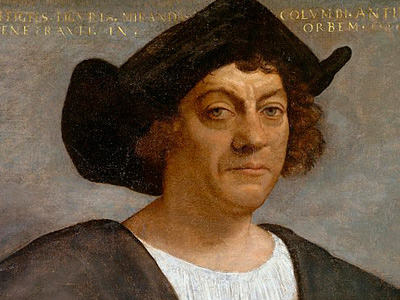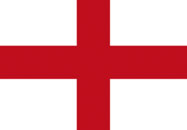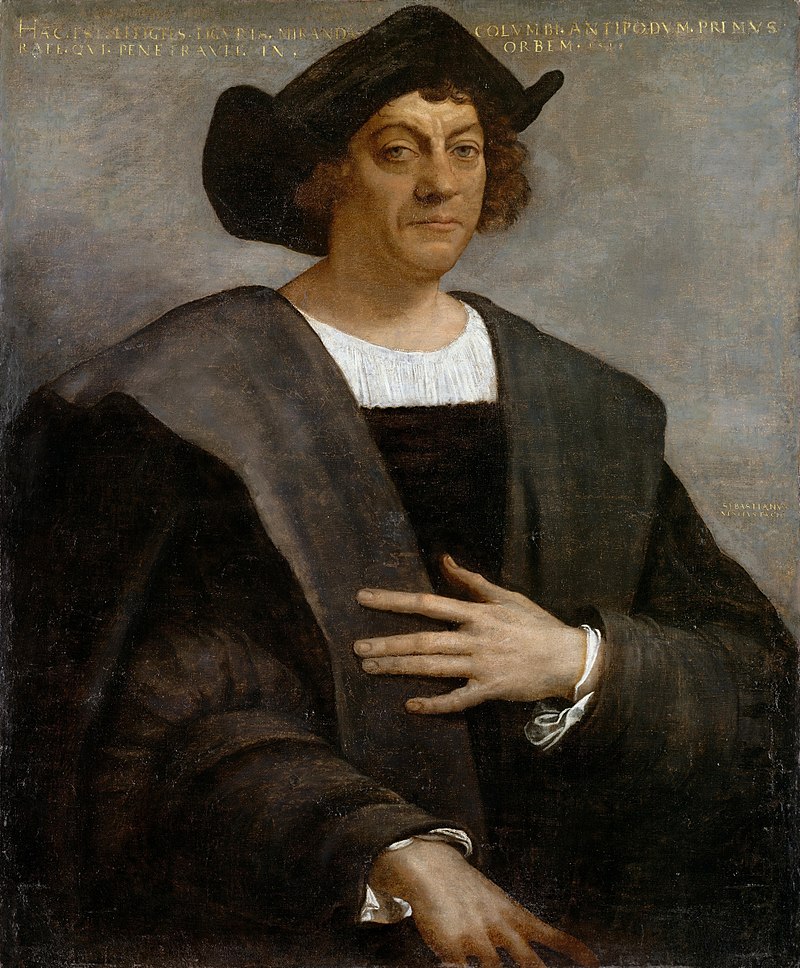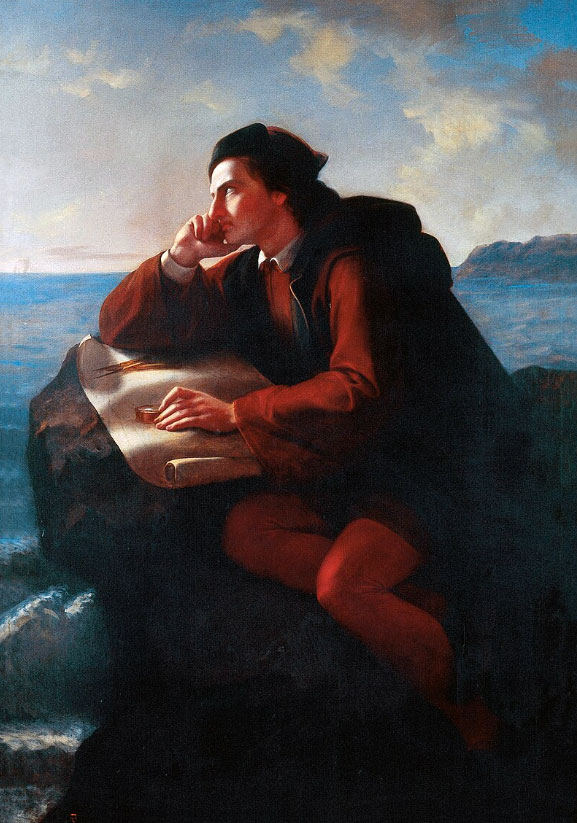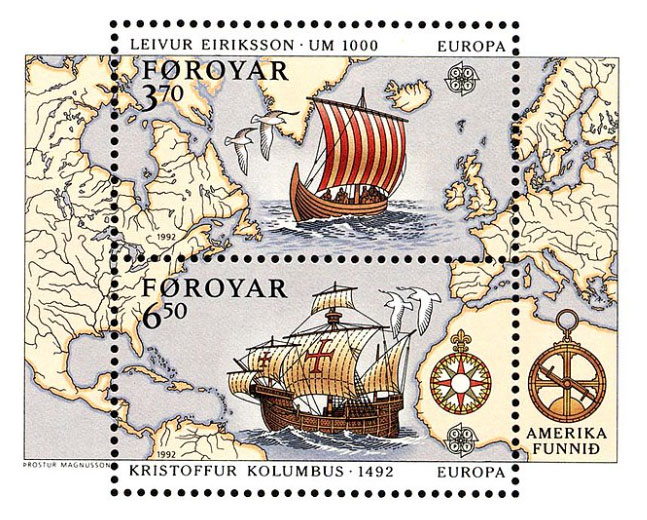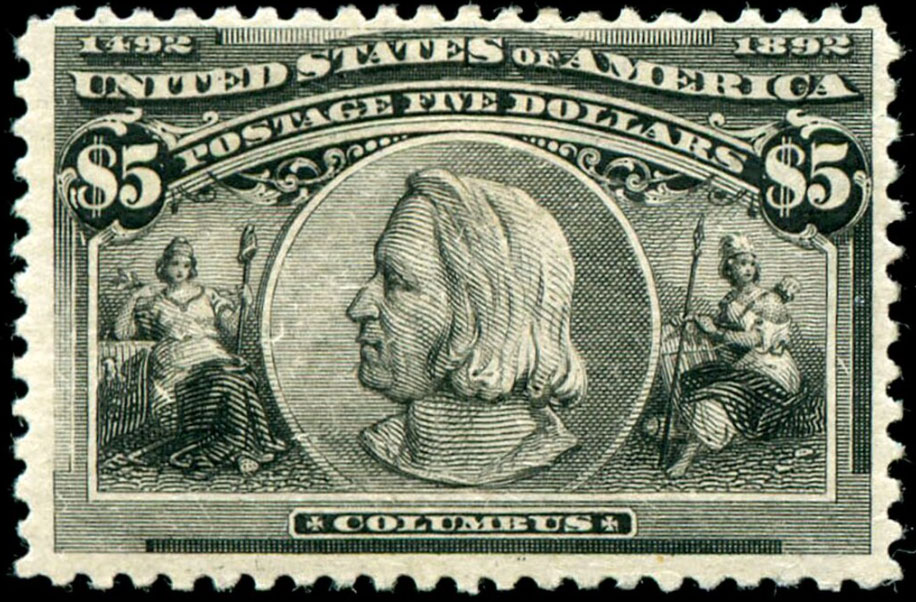Christopher Columbus (1451-1506)
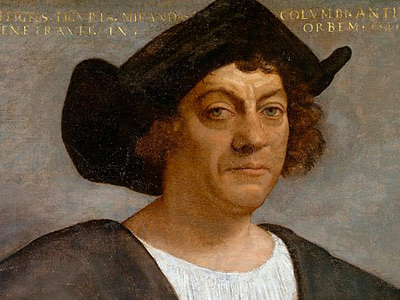
Early Life
The name Christopher Columbus is the Anglicisation of the Latin Christophorus Columbus. His name in Italian is Cristoforo Colombo and, in Spanish, it is Cristóbal Colón. He was born before 31 October 1451 in the territory of the Republic of Genoa (now part of modern Italy), though the exact location remains disputed. His father was Domenico Colombo, a middle-class wool weaver who worked both in Genoa and Savona and who also owned a cheese stand at which young Christopher worked as a helper. His mother was Susanna Fontanarossa. Bartolomeo, Giovanni Pellegrino, and Giacomo were his brothers. Bartolomeo worked in a cartography workshop in Lisbon for at least part of his adulthood. He also had a sister named Bianchinetta.
Columbus never wrote in his native language, which is presumed to have been a Genoese variety of Ligurian (his name would translate in the 16th-century Genoese language as Christoffa Corombo Ligurian pronunciation: [kriˈʃtɔffa kuˈɹuŋbu]). In one of his writings, he says he went to sea at the age of 10. In 1470, the Columbus family moved to Savona, where Domenico took over a tavern. In the same year, Christopher was on a Genoese ship hired in the service of René of Anjou to support his attempt to conquer the Kingdom of Naples. Some modern historians have argued that he was not from Genoa but, instead, from the Aragon region of Spain or from Portugal. These competing hypotheses have generally been discounted by mainstream scholars.
In 1473, Columbus began his apprenticeship as business agent for the important Centurione, Di Negro and Spinola families of Genoa. Later, he allegedly made a trip to Chios, an Aegean island then ruled by Genoa. In May 1476, he took part in an armed convoy sent by Genoa to carry valuable cargo to northern Europe. He docked in Bristol, England The Kingdom of England was a sovereign state on the island of Great Britain from about 927, when it emerged from various Anglo-Saxon kingdoms, until 1 May 1707, when it united with Scotland to form the Kingdom of Great Britain. The Viking invasions of the 9th century upset the balance of power between the English kingdoms, and native Anglo-Saxon life in general. The English lands were unified in the 10th century in a reconquest completed by King Æthelstan in 927. and Galway, Ireland. In 1477, he was possibly in Iceland. In the autumn of 1477, he sailed on a Portuguese ship from Galway to Lisbon, where he found his brother Bartolomeo, and they continued trading for the Centurione family. Columbus based himself in Lisbon from 1477 to 1485. He married Filipa Moniz Perestrelo, daughter of the Porto Santo governor and Portuguese nobleman of Lombard origin Bartolomeu Perestrello.
The Kingdom of England was a sovereign state on the island of Great Britain from about 927, when it emerged from various Anglo-Saxon kingdoms, until 1 May 1707, when it united with Scotland to form the Kingdom of Great Britain. The Viking invasions of the 9th century upset the balance of power between the English kingdoms, and native Anglo-Saxon life in general. The English lands were unified in the 10th century in a reconquest completed by King Æthelstan in 927. and Galway, Ireland. In 1477, he was possibly in Iceland. In the autumn of 1477, he sailed on a Portuguese ship from Galway to Lisbon, where he found his brother Bartolomeo, and they continued trading for the Centurione family. Columbus based himself in Lisbon from 1477 to 1485. He married Filipa Moniz Perestrelo, daughter of the Porto Santo governor and Portuguese nobleman of Lombard origin Bartolomeu Perestrello.

In 1479 or 1480, his son Diego Columbus was born. Between 1482 and 1485, Columbus traded along the coasts of West Africa, reaching the Portuguese trading post of Elmina at the Guinea coast. Some records report that Filipa died sometime around 1485, while Columbus was away in Castile. He returned to Portugal to settle her estate and take his son Diego with him. He had left Portugal for Castile in 1485, where he found a mistress in 1487, a 20-year-old orphan named Beatriz Enríquez de Arana. It is likely that Beatriz met Columbus when he was in Córdoba, a gathering site of many Genoese merchants and where the court of the Catholic monarchs was located at intervals. Beatriz, unmarried at the time, gave birth to Columbus's natural son Fernando Columbus in July 1488, named for the monarch of Aragón. Columbus recognized the boy as his offspring. Columbus entrusted his older, legitimate son Diego to take care of Beatriz and pay the pension set aside for her following his death, but Diego was negligent in his duties.
Ambitious, Columbus eventually learned Latin, Portuguese, and Castilian. He read widely about astronomy, geography, and history, including the works of Claudius Ptolemy, Cardinal Pierre d'Ailly's Imago Mundi, the travels of Marco Polo and Sir John Mandeville, Pliny's Natural History, and Pope Pius II's Historia Rerum Ubique Gestarum. According to historian Edmund Morgan,
"Columbus was not a scholarly man. Yet he studied these books, made hundreds of marginal notations in them and came out with ideas about the world that were characteristically simple and strong and sometimes wrong,..."
Throughout his life, Columbus also showed a keen interest in the Bible and in Biblical prophecies, often quoting biblical texts in his letters and logs. For example, part of the argument that he submitted to the Spanish Catholic Monarchs when he sought their support for his proposed expedition to reach the Indies by sailing west was based on his reading of the Second Book of Esdras (Ezra), which he took to mean that the Earth is made of six parts of land to one of water. Towards the end of his life, he produced a Book of Prophecies in which his career as an explorer is interpreted in the light of Christian eschatology and of apocalypticism.
HISTORY
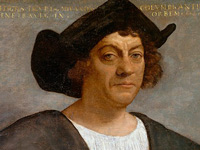
RESOURCES
This article uses material from the Wikipedia article "Christopher Columbus (1451-1506)", which is released under the Creative Commons Attribution-Share-Alike License 3.0.
© Stories Preschool. All Rights Reserved.
